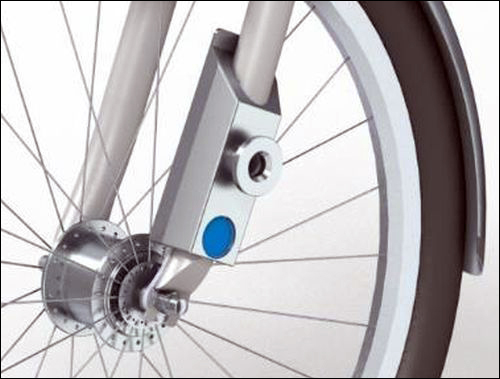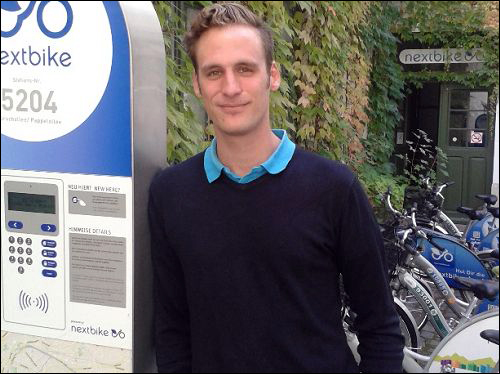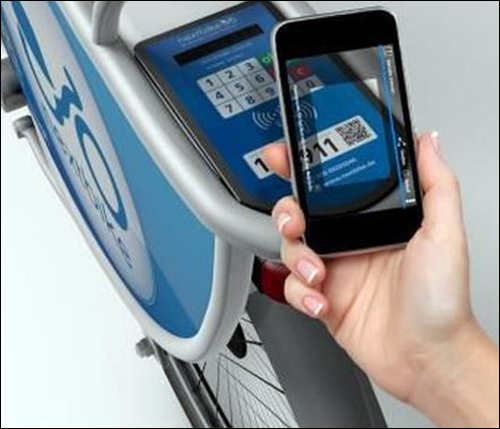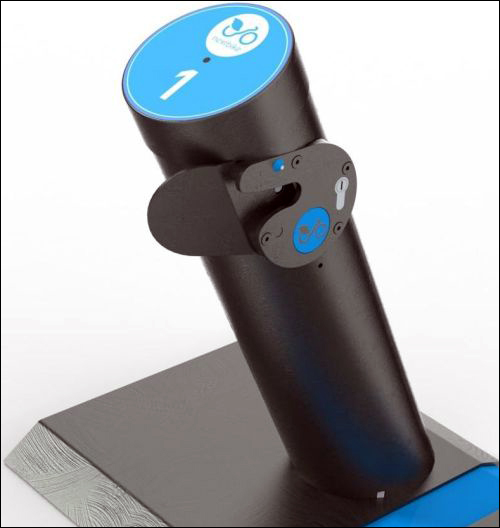For several years, Nextbike, a bicycle-rental system provider based in Leipzig, Germany, has been using Near Field Communication (NFC) RFID tags to identify bikes docked at its stations, and to provide authorized users with access to those bicycles. With RFID tags embedded in its bikes, the company can confirm not only that a bike is authentic before its locking mechanism is engaged, but also that a bicycle has been returned on time, explains Sebastian Schlebusch, Nextbike’s director of international business development. Users can also employ smart cards with built-in NFC tags to access bikes.
Nextbike was established in 2005 with 20 rental bikes, and now has more than 30,000 bicycles worldwide. Originally, each customer had to call a hotline to receive a code for unlocking a docked bike.

Later on, Nextbike installed automated payment terminals allowing users to rent a bike via an app on their NFC-enabled smartphone, or a high-frequency (HF) 13.56 MHz RFID smart card. An individual could also log in to Nextbike’s website via a mobile phone and enter a specific dock’s ID number. Once a customer was authorized, the system released the lock securing the bicycle to the dock.
In 2011, however, the company approached Smart-TEC to obtain an RFID tag that would provide a unique identifier for each bike. Smart-TEC specializes in custom tags, says Klaus Dargahi, Smart-TEC’s managing director. In this case, he explains, the challenge was to create a tag that would fit into a recess located in the metal docking adapter on each bike’s front fork (rather than simply affixing the tag to the adapter’s surface), thereby preventing the tag from being damaged or scraped off.

Smart-TEC encased an NFC RFID inlay (the company utilizes a variety of off-the-shelf 13.56 MHz inlays compliant with the ISO 144443 standard) in an epoxy to protect the tag. The firm also had to tune the tag, Dargahi explains, so that it would transmit data properly from its position surrounded by the bike’s metal frame. Nextbike glued the tags to each bike’s docking adaptor, and also incorporated an Elatec TWN4 Mifare NFC reader into each of its SmartDocks.
Upon returning a bicycle to a rental station, an individual places it in front of a vacant SmartDock. “The dock includes an electromechanical lock,” Schlebusch says. The SmartDock’s RFID reader captures the bike’s tag ID number, and if the cloud-based Nextbike Office software built into the system confirms the ID as authorized, it triggers the lock to close around the bike frame.
Nextbike Office software enables the bike-sharing network to manage its stock inventories and payments, and to oversee what are currently, on average, 75,000 daily trips. The Nextbike system includes 1.5 million authorized users.
Nextbike installed 66 rental stations with SmartDocks in Nürnberg in 2011. The RFID-enabled solution was later installed at 10 cities in Germany’s Ruhr region for the Metropolradruhr bike-rental network, which now comprises 3,000 RFID-tagged bikes and 300 rental stations with SmartDocks.
In 2014, the company also began offering what it calls its SmartBike system, with an RFID reader mounted on the bike itself. A user can wave an “e-Ticket” (a prepaid ticket with a built-in NFC tag) or an NFC-enabled smartphone running a Nextbike app over the bicycle’s reader. The bike reader’s software identifies the tag ID and, if the user is authorized, the dock releases the bike.

Currently, Schlebusch reports, a total of 30,000 tagged Nextbike bicycles are available for rental on four continents, throughout 18 countries and in more than 100 cities. Approximately 6,000 of those bicycles are SmartBikes and are now in use, while about 1,100 rental stations contain SmartDocks.


